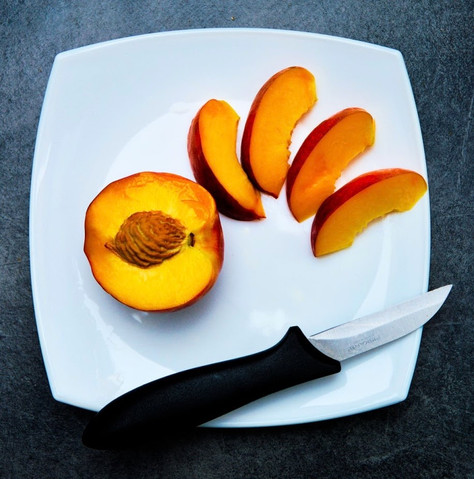Posted by Jeff Pauls on 23rd Apr 2018
Look Outside! Are the Peach Trees Blooming?
The beauty of a peach orchard in full bloom is a sight to behold. In Pennsylvania, we are blessed to have access to fresh, local
peaches. Peaches have been part of Pennsylvania Agriculture since before it became Pennsylvania. Seeing their value, the Native Americans were among the first to cultivate them, causing William Penn to comment on their abundance in his 1683 advertisement for the colony, saying, “Here are also peaches, and very good, and in great quantities, not an Indian plantation without them;...” While they were not necessarily being tended as orchards per se, they were certainly prolific. In fact, “by the beginning of the eighteenth century, peach trees had naturalized so abundantly throughout the southeastern and mid-Atlantic colonies that John Lawson said they grew as luxuriantly as weeds: ‘we are forced to take a great deal of Care to weed them out, otherwise they make our Land a Wilderness of Peach-Trees.’” By 1896, in the bulletin George C. Butz assembled reporting his assessment of The Peach Industry in Pennsylvania, peach orchards had been part of Pennsylvania agriculture for 25 years.
1896 map of peach-growing regions in Pennsylvania included in Bulletin No. 37 - The Peach Industry of Pennsylvania
And now, here we are reaping the benefits of all that food history. With the first aromatic blooms appearing in our orchards, we’re all eagerly anticipating our first juicy peach of the season.
Let’s Celebrate Peaches!
To help you get prepared to take full advantage of our peaches when they become available, here are some Frequently Asked Questions that we answer at Kauffman’s. The list below is just a snippet. Find more information here.
What makes a peach juicy?
Warm weather and tree-ripened harvest are the key contributors to juicy peaches.
Which is the best peach?
For some, a peach is a peach and there is no "best" peach. Many factors (see first FAQ) affect the making of a good peach. The most significant factor is your personal taste and preference. Here at Kauffman's, we aim to please, so don't hesitate to ask us questions or ask for a sample of a peach on display. We will do our best to help you. Virtually any of the fifty varieties of yellow-fleshed peaches we grow are finely suited for canning. However, Red Haven is the landslide favorite of our customer base. White-fleshed peaches are not as popular for canning because they brown significantly after they are peeled.
How can I help my peaches ripen properly?
Most of the peaches you buy here will require 2-3 days to ripen. Spread them out in a single layer at room temperature and use them as they ripen (it's not likely that they'll all ripen at the same time.) For smaller quantities, store them at room temperature in a paper bag until they ripen.
How many quarts of canned or frozen peaches can I expect from a half-bushel basket of fresh peaches?
10-12 quarts.
What makes a peach freestone (have a removable pit)?
In a word, weather. Early varieties are always clingstone. Usually, the gradual change between freestone and clingstone occurs after the first picking of Red Haven, but every year is different. Babygold, an exception to the rule, is a mid-season peach that is always clingstone.
What's the difference between yellow and white peaches?
First, it's more properly a "yellow-flesh" or "white-flesh" peach, as no peach actually has yellow or white skin. But to answer the question, most peaches have the yellow flesh that most people expect a peach to have; these varieties generally are used for canning and freezing because they keep their texture and color. White-fleshed peaches are much more mild and soft; therefore, while they make absolutely wonderful snacks, white-fleshed peaches are not nearly as suitable for canning and freezing.
For more FAQs and the list of all our peaches and their availability, go to this page and scroll down.
Core Fact: Peach trees are pollinated mainly by the wind. No bees are used in the peach orchards.
(p.43 Faith, Family, and Fruit)

